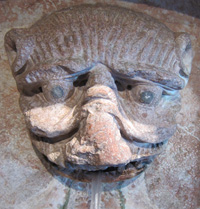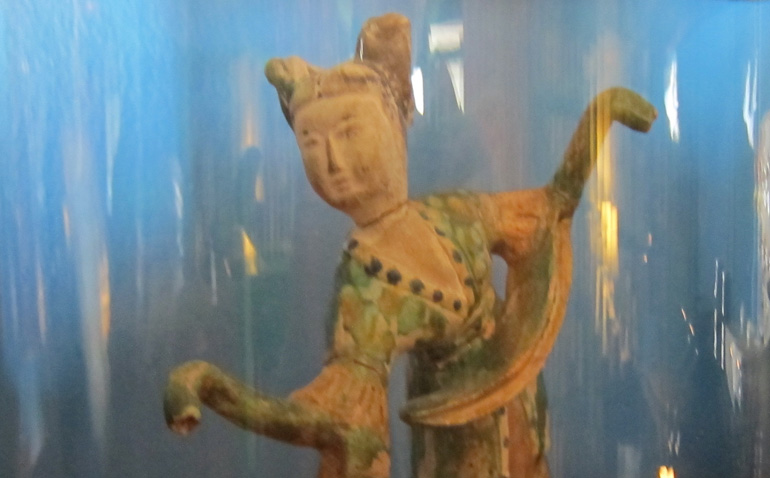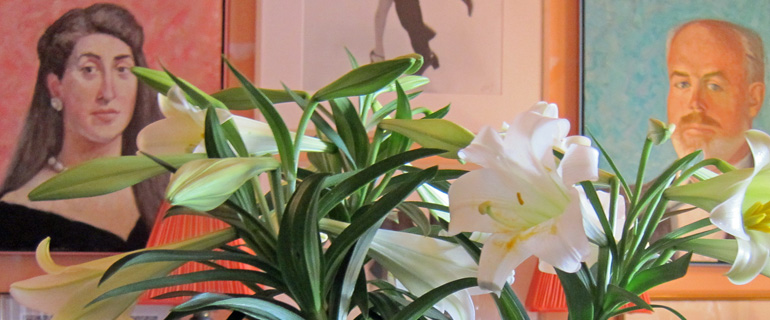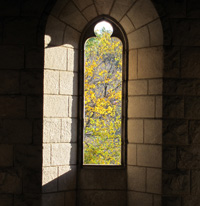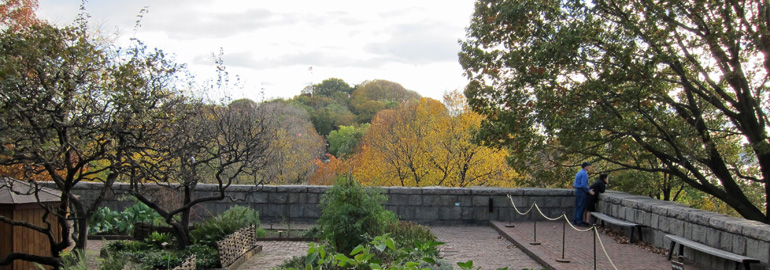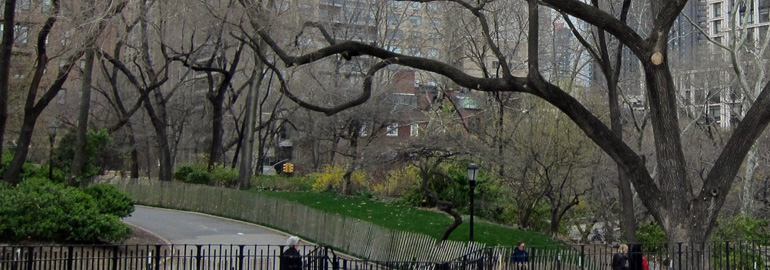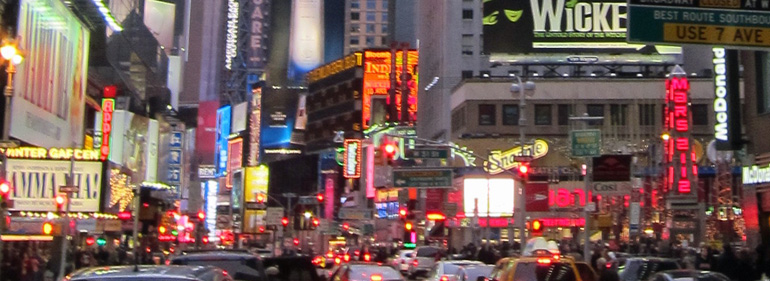
As I watched Tom Riley play the part of Septimus Hodge in Tom Stoppard’s Arcadia, a play that’s making its Broadway premieire sixteen years after its off-Broadway debut, I tried to remember what Billy Crudup was like in the role the first time round. Making this exercise doubly difficult was the presence of Mr Crudup himself on the stage, now playing the part of Bernard Nightingale. Septimus Hodge belongs to the “early” part of the action, which begins in 1809 and ends a few years later; Bernard Nightingale is our contemporary. The two time frames do not share the stage much until the action in both thickens toward the doubled climax, but every time Mr Crudup burst upon the scene he scattered his earlier persona into atoms. His long hair and sober, late-Eighteenth Century demeanor were replaced by a trim cut, a slim suit jacket, and spruce jeans, but mostly it was the smirk that did it. Septimu Hodge might smile, and his smile might drip condescension; but he doesn’t smirk. Bernard Nightingale is a smirk, even in disaster. (And how could he not be? Bill Nighy created the role, in 1993.) I knew that I had seen Billy Crudup as Hodge, but I couldn’t bring his Hodge back.Â
The recurrence of Billy Crudup in Arcadia, playing a different role — that of a somewhat older man — is arguably the most marvelous things about this production, not because the actor does a fine job (which he most certainly does) but because the recurrence itself points to the deeper meaning of the play. Arcadia is generally thought to be an intellectually demanding play (as are most of Mr Stoppard’s), and there are certainly passages of expository discussion that require the complete attention of an educated mind. But these moments are actually as rare as they are in real life, which Arcadia, for all its artistry and illusion, more closely captures than most dramas. Most of the characters are very intelligent people, and they talk about things that interest them with wit and passion. These exchanges are never as decorative as they might seem, because they always refer to the deeper meaning that I mentioned; but they are not what the play is “about,” either.Â
Arcadia, as a poetic place, dates to the High Renaissance, when the baggage of the classical past was heavily recycled for modern purposes. A mountainous region of the Peloponnese peninsula lent its name to a mythological earthly paradise of nymphs, shepherds, and fragrant bowers. When Philip Sidney imagined it as a getaway for blasé courtiers, the rough edges were cleaned up, and unpleasant possibilities were wrapped up in the enigmatic phrase, Et in Arcadia ego. In lieu of a leisurely ramble through Erwin Panofsky’s famous essay on the subject of this inscription, which famously appears on one painting by Guercino and on two by Poussin, we will come straight to the point, which is that the earlier Poussin hangs at Chatsworth House, one of the most stately homes in England and home, until recently, of the playwright’s good friend Deborah Devonshire.
While it would be as silly to argue that Arcadia is “about” Chatsworth as it would be to say that the play is “about” the laws of entropy and thermodynamics, the slippages of historiography, or the art of landscaping, I became convinced that the play really is about breathing the very real “Arcadian” atmosphere that obtains at England’s great estates — especially the ones that have been held on to by the same family for centuries. It is about spending hours in rooms and beneath trees with someone who might be the Duchess of Something-or-other, and wondering what it might have been like to sit next to an earlier bearer of that title in the very same spot, a century or two ago. Or perhaps to play with a boy called Lord Augustus. In Arcadia, there are two such boys, played by the same actor, one of them long buried in his grave, the other immured in something like autism. Above all, Arcadia is an essay in the fruitfulness of death.
The Coverly family, headed by the Lord Croom of the moment, resides at Sidley Park in Derbyshire (the home of Chatworth and also of Mr Darcy’s fictional Pemberley — a region of rough, “Arcadian” terrain). We never meet a Lord Croom, and a fine essay could be composed on the playwright’s elegant elision of several “characters” — most remarkably, Lord Byron, the play’s McGuffin — but we do meet a Lady Croom and a total of five Coverly children. Lady Croom and two young Coverlys appear in the play’s earlier time frame, set, as I’ve said, in the middle of the Napoleonic brouhaha. The principal action here is anything but: Lady Thomasina Coverly, whom we realize is a natural mathematical genius, teases her suave and handsome tutor, Septimus Hodge, while nursing a crush on him. Not much happens in the course of this period badinage, but from background, lusty Lady Croom, the poetaster Ezra Chater, whom Septimus has apparently cuckholded, a stentorian Naval officer, a landscape architect called Richard Noakes, and a portly butler all emerge to distract the tutor. A climax is reached when Septimus recognizes the enormity of Thomasina’s amateur discoveries. Thanks to the second, later time frame, we know what happens next, and this makes the end of Arcadia immensely poignant, but learning about it from characters posited two centuries later has the effect of muting the sorrow. Thus the play itself dabbles in the practice of history, contrasting events with the traces that they leave to the future.Â
In the later time frame, three Coverly children are gathered at Sidley Park, Valentine, Chloë, and Gus. Also on hand are Hannah Jarvis, an unorthodox — non-academic — literary historian, and, presently, Bernard Nightgale, an altogether more conventional (and unbearable) opportunist from Sussex. Bernard is on the scent of a sensational scandal involving a duel fought long ago — during the earlier time frame. Hannah is researching “the hermit of Sidley Park,” a creature who eked out a mysterious, raving living in an ornamental structure designed and built by Noakes back in — you guessed it. Dramatic irony has never been put to such self-expressive use: as Bernard and Hannah and Valentine chatter away about what “must” have happened long ago at Sidley Park, we know what did, because we just saw it happen.
The climax here mirrors that of the earlier frame: Hannah hits on the answer to her question, and knows who the hermit was. And we’re as sure in our gut that she’s right as she is, even though none of us can be sure. Something deep has happened in the grand but spare room, giving out onto the park, on which we’ve been flies on the wall for several hours; something equally deep has happened much later: the excavation of the earlier depth. These moments are almost simultaneous, and their theatrical impact is like nothing else. The passage of time — real and dramatic — is canceled and ratified in the same instant. As if in homage to the Arcadian entertainments of the Renaissance, Mr Stoppard ends the play with two couples of nymphs and shepherds dancing a simple, wordless ballet.Â
Arcadia calls for a cast of twelve, half of whom really have to be stars. The new production, directed by David Leveaux, burns with brilliant talent. Tom Riley and Billy Crudup, I’ve already mentioned, are superb as Septimus Hodge and Bernard Nightingale. (Mr Crudup may well have a corner on playing characters whom we like to dislike.) Bel Powley’s Thomasina was endearingly brash; I only wish that the makeup that she wore at the end had not brought Ann Miller to mind. I hope that we’ll get to see more of Lia Williams; she puts her own fine stamp on the role of the earthily impatient Hannah. Raul Esparza disappeared so completely into the diffident Val that I didn’t recognize him until the interval, and Margaret Colin, as Lady Croom, demonstrated that she will make a fine Lady Bracknell someday. (“But surely a hermit who takes a newspaper is not a hermit in whom one can have complete confidence.”) Grace Gummer, the engagingly ingénue daughter of you-know-who, and Noah Robbins held their own as Chloë and Gus Coverly. David Turner was agreeable in the thankless role of Ezra Chater. Byron Jennings, Edward James Hyland, and Glenn Fleshler all sparkled as Noakes, the butler, and the Naval officer, respectively — stock parts that only a playwright of Tom Stoppard’s stature would be permitted to include. Hildegard Bechtler, Donald Holder, and Gregory Gale rose to the challenge of giving Arcadia the sets, lighting, and costumes that a Broadway revival demands; the warm simplicity of their effects invited us all to sojourn for a while in a myth whose power we might have discounted.Â



